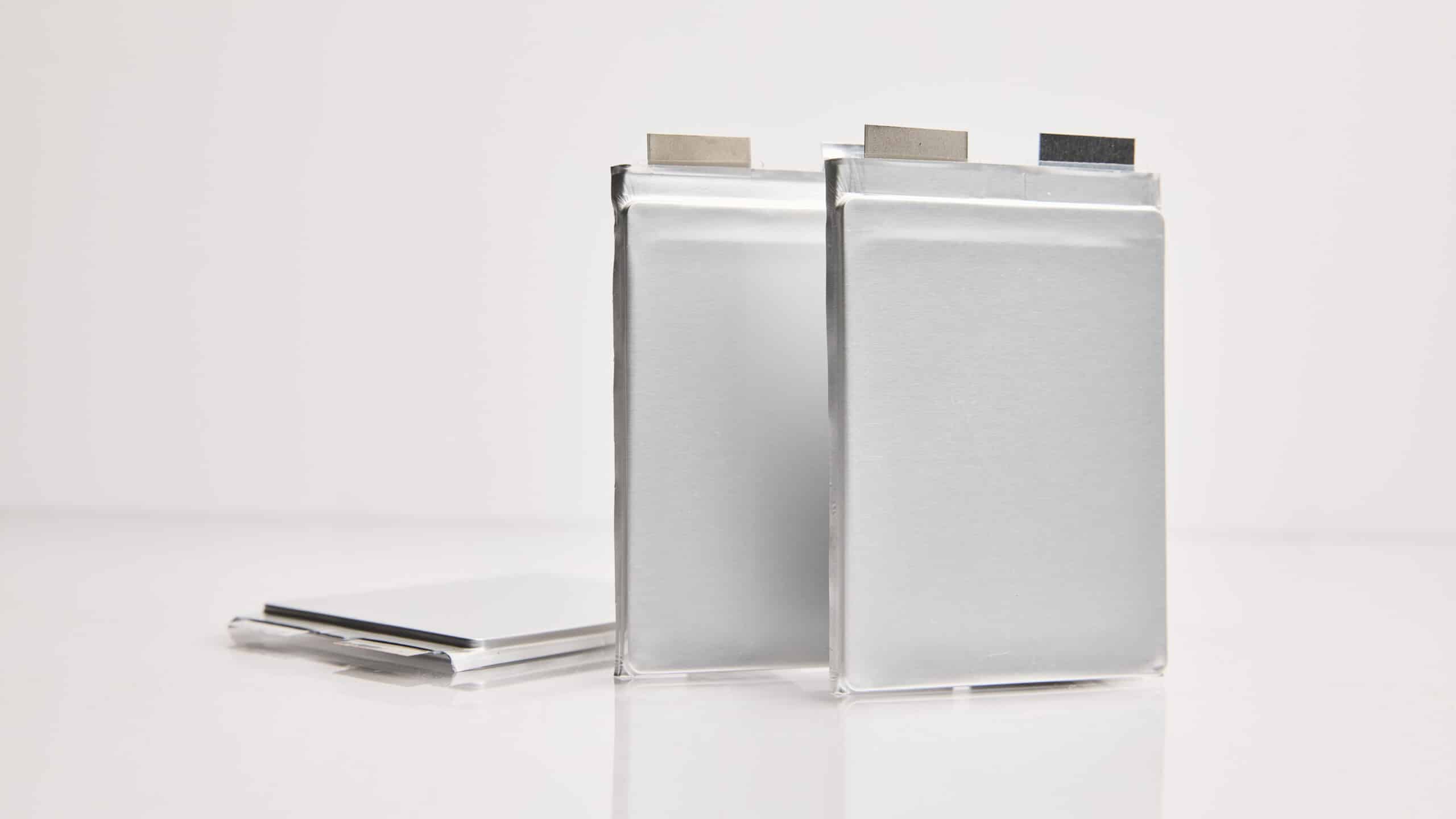
Our Strategic Blueprint
I took on the CEO role last year because I see QuantumScape as the global leader in solid state battery technologies with an ability to revolutionize energy storage and create tremendous shareholder value in the process.
Let’s say you have a 1-liter bottle of water and you pour all of its contents into another empty 1-liter bottle and then back to the original bottle. A few drops of water spill as you do so. The loss is hardly noticeable — the drops may account for only 1% of the total, so you still have 99% of the water that you started with. This example essentially illustrates Coulombic efficiency — the ratio between the number of electrons (units of electrical charge) transferred from one electrode of a battery cell to the other during charge and the number transferred back during discharge. The difference between these two numbers typically reflects the fact that some lithium ions are lost during the charge/discharge process. The higher the Coulombic efficiency, the less capacity the battery loses in each charge/discharge cycle, and the longer its potential lifespan.
In our water bottle example, the equivalent Coulombic efficiency would be 99% — total (100%) minus percent lost (1%). 99% may sound like really good retention, but when you think about this happening many times in succession, the effect quickly adds up. For example, if you continue to pour the water back and forth between the two bottles 100 times, losing 1% of the water in each pour, you’ll end up with ~37% of the original volume, or 370 mL — and that loss will be very noticeable.
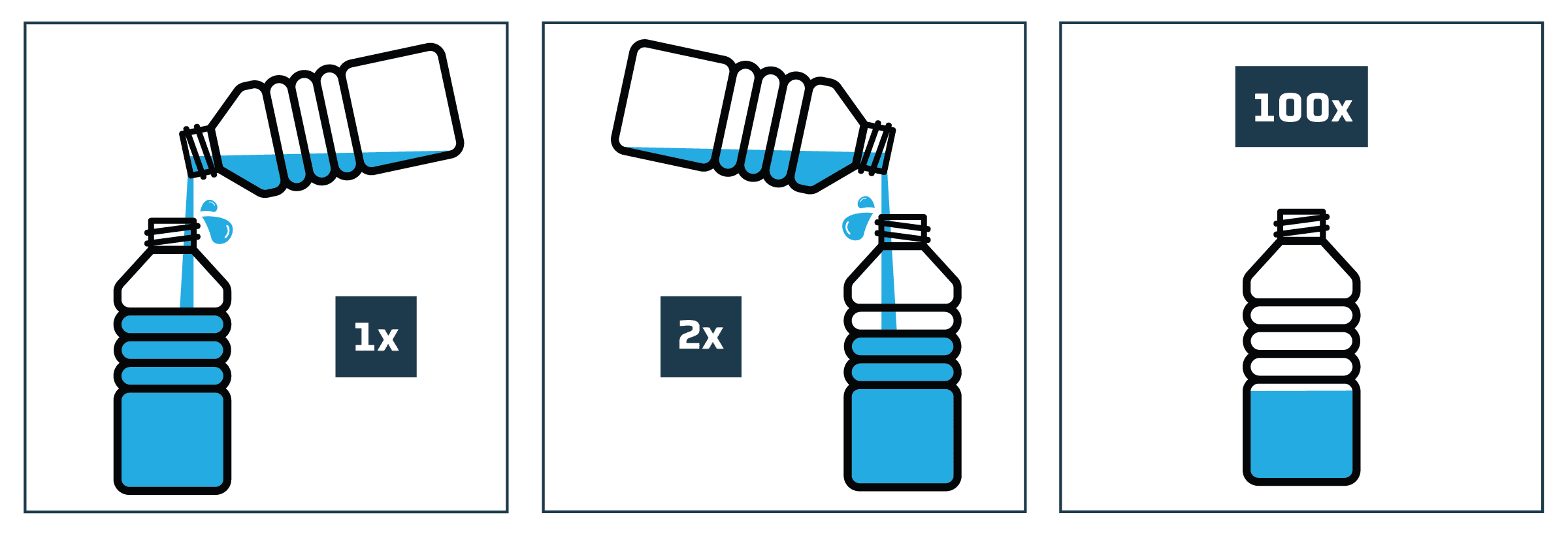
This is similar to what happens in batteries. Lithium ions in a battery are like the water in our analogy, with each bottle pour representing another battery charge/discharge cycle. As lithium ions move between the anode and cathode during charge and discharge, some are lost to side reactions. No physical system is ever perfectly efficient, and although 99% efficiency may sound excellent, the following chart demonstrates how the energy storage capability of a lithium-ion battery with a Coulombic efficiency of 99% decays dramatically after only a few dozen cycles.[1]
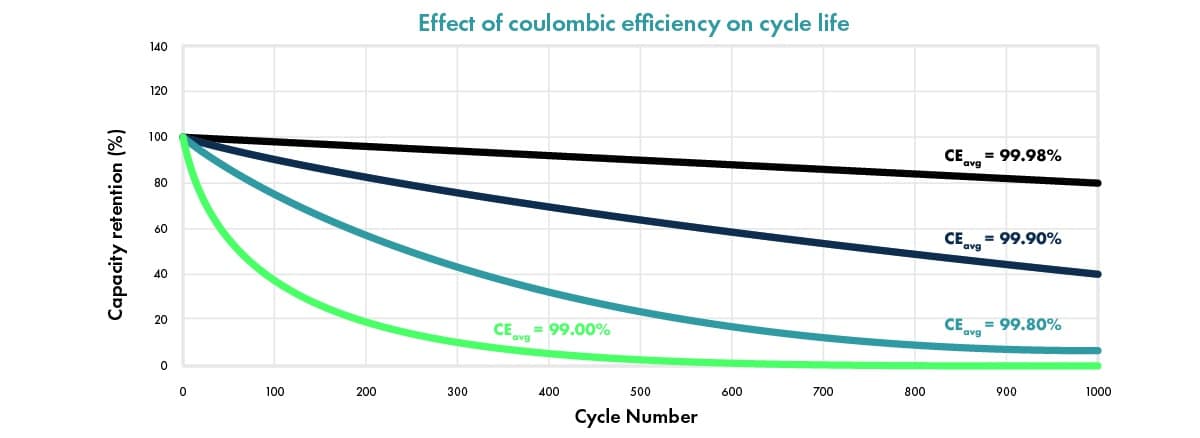
One important caveat: to measure Coulombic efficiency accurately, the effects of any excess lithium must be excluded.[2] QuantumScape’s technology does not require extra lithium foil on the anode, but some other lithium-metal technologies do. A cell that contains extra lithium-metal foil on the anode may temporarily mask capacity fade in cells with low Coulombic efficiency, and Coulombic efficiency may even appear to exceed 100% during early cycles.[3] However, adding extra lithium foil does not solve the underlying problem, and carries penalties in the form of added materials cost and a more complex manufacturing process, which both make the cell more expensive.
Electric vehicle batteries must have excellent Coulombic efficiency, but that is not enough on its own. Battery cells can face a lot of challenges over a lifetime of hundreds of charge/discharge cycles, such as resistance growth or dendrite formation. A cell’s Coulombic efficiency represents the maximum limit of its cycle life performance, assuming these other problems don’t get in the way.
[2] For more information on excess lithium in lithium-metal batteries, see our blog on liquids and polymers with lithium metal.
[3] This is because the loss of lithium is compensated for by the extra lithium available in the foil. However, resistance growth due to side reactions will reduce the accessible capacity, reducing the battery’s capability to store energy.
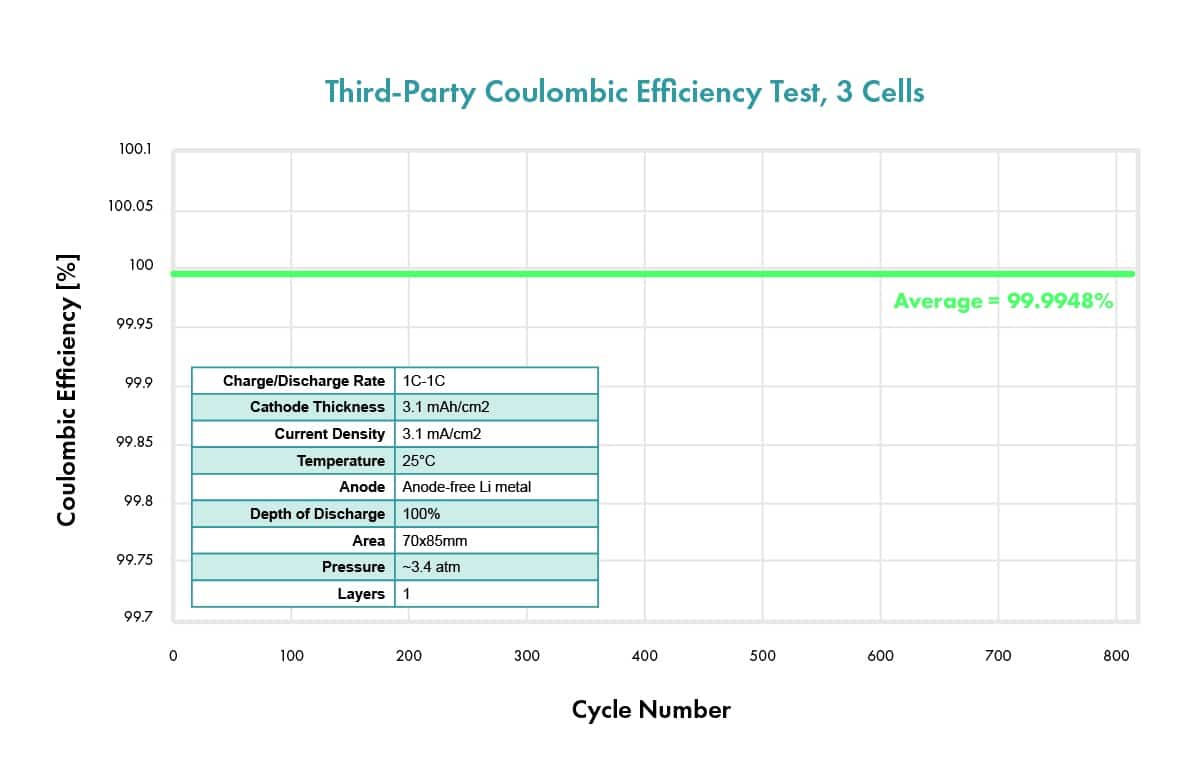
Forward-Looking Statements
This article contains forward-looking statements within the meaning of the federal securities laws and information based on management’s current expectations as of the date of this current report. All statements other than statements of historical fact contained in this article, including statements regarding the future development of QuantumScape’s battery technology, the anticipated benefits of QuantumScape’s technologies and the performance of its batteries, and plans and objectives for future operations, are forward-looking statements. When used in this current report, the words “may,” “will,” “estimate,” “pro forma,” “expect,” “plan,” “believe,” “potential,” “predict,” “target,” “should,” “would,” “could,” “continue,” “believe,” “project,” “intend,” “anticipates” the negative of such terms and other similar expressions are intended to identify forward-looking statements, although not all forward-looking statements contain such identifying words.
These forward-looking statements are based on management’s current expectations, assumptions, hopes, beliefs, intentions, and strategies regarding future events and are based on currently available information as to the outcome and timing of future events. These forward-looking statements involve significant risks and uncertainties that could cause the actual results to differ materially from the expected results. Many of these factors are outside QuantumScape’s control and are difficult to predict. QuantumScape cautions readers not to place undue reliance upon any forward-looking statements, which speak only as of the date made. Except as otherwise required by applicable law, QuantumScape disclaims any duty to update any forward-looking statements. Should underlying assumptions prove incorrect, actual results and projections could differ materially from those expressed in any forward-looking statements. Additional information concerning these and other factors that could materially affect QuantumScape’s actual results can be found in QuantumScape’s periodic filings with the SEC. QuantumScape’s SEC filings are available publicly on the SEC’s website at www.sec.gov.

I took on the CEO role last year because I see QuantumScape as the global leader in solid state battery technologies with an ability to revolutionize energy storage and create tremendous shareholder value in the process.
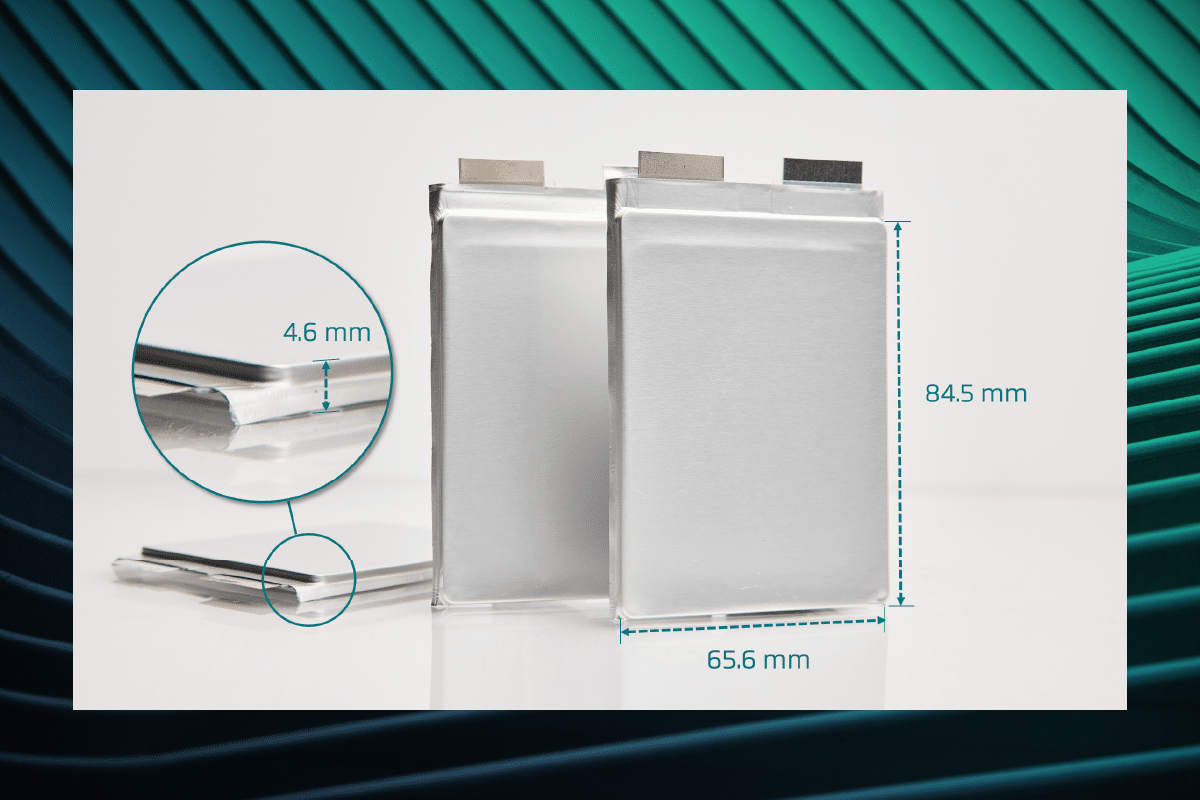
QuantumScape’s planned first commercial product, QSE-5, is a ~5 amp-hour cell designed to meet the requirements of automotive applications. Here, we’ll walk through the various elements of the cell specifications and explain some of the complexities behind the seemingly simple metric of energy density.

I took on the CEO role last year because I see QuantumScape as the global leader in solid state battery technologies with an ability to revolutionize energy storage and create tremendous shareholder value in the process.

QuantumScape’s planned first commercial product, QSE-5, is a ~5 amp-hour cell designed to meet the requirements of automotive applications. Here, we’ll walk through the various elements of the cell specifications and explain some of the complexities behind the seemingly simple metric of energy density.
Privacy Policy | Terms of Use
© 2025 QuantumScape Battery, Inc.
1730 Technology Drive, San Jose, CA 95110
info@quantumscape.com

Pamela Fong is QuantumScape’s Chief of Human Resources Operations, leading people strategy and operations, including talent acquisition, organizational development and employee engagement. Prior to joining the company, Ms. Fong served as the Vice President of Global Human Resources at PDF Solutions (NASDAQ: PDFS), a semiconductor SAAS company. Before that, she served in several HR leadership roles at Foxconn Interconnect Technology, Inc., a multinational electronics manufacturer, and NUMMI, an automotive manufacturing joint venture between Toyota and General Motors. Ms. Fong holds a B.S. in Business Administration from U.C. Berkeley and a M.S. in Management from Stanford Graduate School of Business.